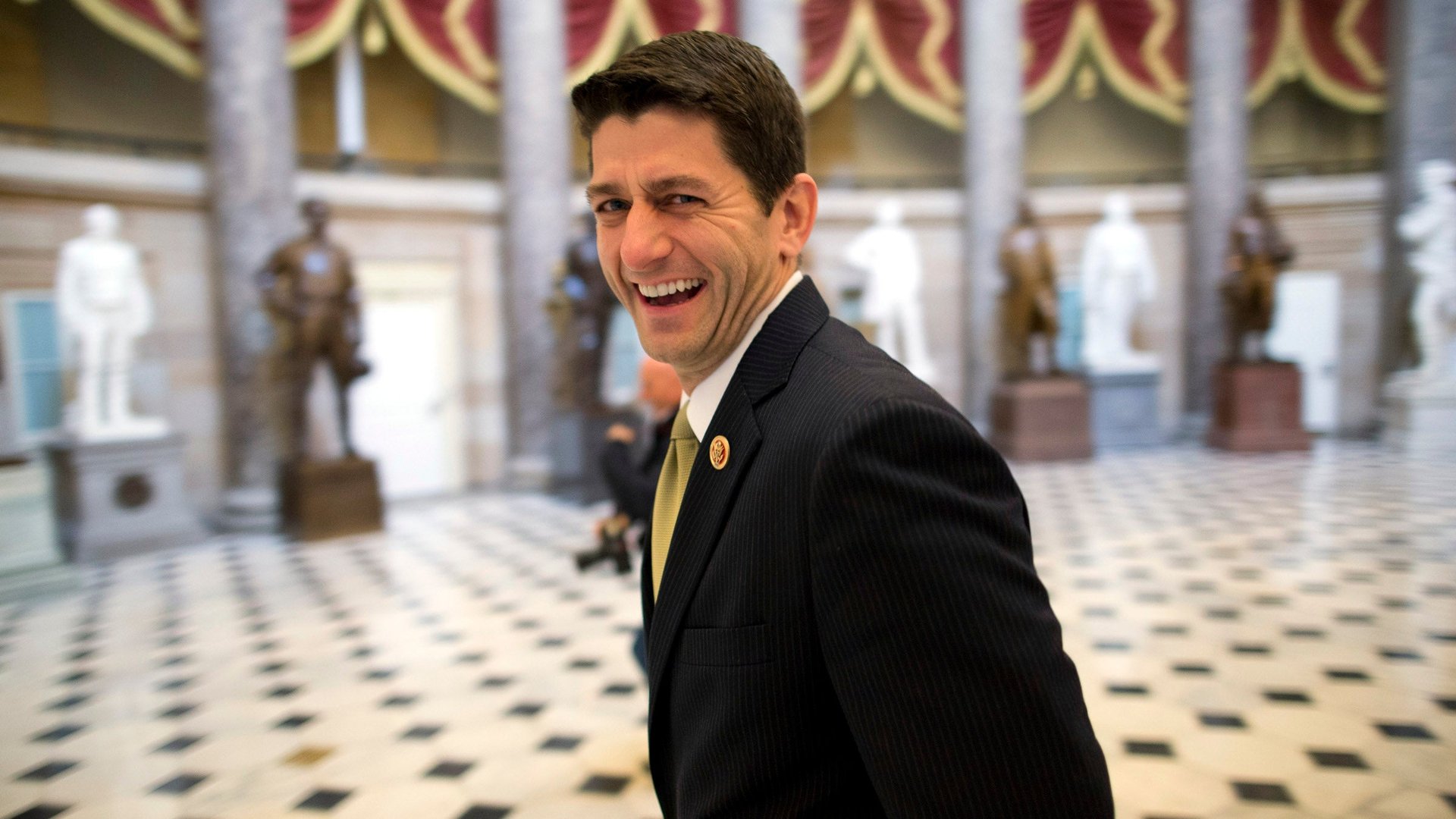Republicans wouldn’t spend to save US jobs until the crisis was over
In 2011, with unemployment still at 9% and borrowing costs falling, Republican lawmakers forced a fiscal showdown that ultimately put strict caps on US spending, limiting the government’s ability to invest and create jobs at a critical time. Not satisfied, representative Paul Ryan proposed $5 trillion in budget cuts (pdf) the next year, criticizing then-president Barack Obama’s desire to invest in infrastructure and energy projects as “looming crisis” that would bring a “crushing burden of debt.”


In 2011, with unemployment still at 9% and borrowing costs falling, Republican lawmakers forced a fiscal showdown that ultimately put strict caps on US spending, limiting the government’s ability to invest and create jobs at a critical time. Not satisfied, representative Paul Ryan proposed $5 trillion in budget cuts (pdf) the next year, criticizing then-president Barack Obama’s desire to invest in infrastructure and energy projects as “looming crisis” that would bring a “crushing burden of debt.”
Yet under president Donald Trump, with unemployment at 4.1% and interest rates on the rise, speaker of the House Paul Ryan and his party have now enacted tax breaks and spending increases to the tune of $3 trillion, far more than the $800 billion included in the stimulus bill Obama and the Democrats passed over Republican objections in 2009.
The fiscal hypocrisy of the Republican party is, at this point, old news. Their crusade to reign in federal spending and borrowing waxes and wanes with the presence or absence of a Democrat in the White House. Yet it’s worth sparing a moment for the Americans who had to suffer through years of unemployment and slow growth while Republicans waited to open the fiscal spigot.
In 2013, when Federal Reserve chair Ben Bernanke was asked if his policies were effective in driving the US economic recovery, he noted (pdf) the “fiscal drag” of the spending decisions made by Congress, which “cost between 1 and 1½ percentage points of real growth and hundreds of thousands of jobs.”
The millions of Americans without jobs during the depths of the recession weren’t just hurting then; economic research shows that recessions can have long term effects on people’s income, education and even health.
Keynesian economists and Obama’s Democrats pushed for investment in transportation, communications and energy to boost the economy during the depths of the recession, while Republicans sided with economists of a more Austrian bent who feared that debt would kill growth. Republicans, steelier players of the shutdown game, won out by creating the same budget caps they just lifted.
So, instead of borrowing cheaply for fiscal stimulus when Americans need a boost, the US will now borrow at higher prices while the economy is at nearly full employment. This is precisely the opposite recommendation of counter-cyclical economic policy, where the government steps in with its superior ability to borrow money during a crisis, and retrenches itself during good times. Congress tends to ignore this logic, leaving the Fed scrambling to make up the slack with interest rate policy.
Thanks to this approach, the legacy of Obama-era fiscal gridlock is some of the lowest domestic investment since World War II. There is reason to be grateful that some investment in the new spending bill will benefit the public (the recently-passed tax bill, on the other hand, is far more dubious proposition when it comes to boosting prosperity broadly across the US). Yet had any of these acts of fiscal stimulus come just a few years earlier, they would have cost far less—and helped pull millions of Americans back into the workforce.
“My party is now complicit in the deficits,” dismayed Republican senator Rand Paul complained ahead of a vote on the spending bill earlier this week. What took them so long?